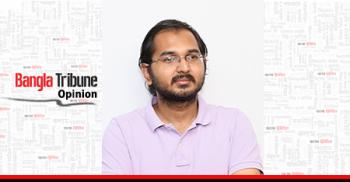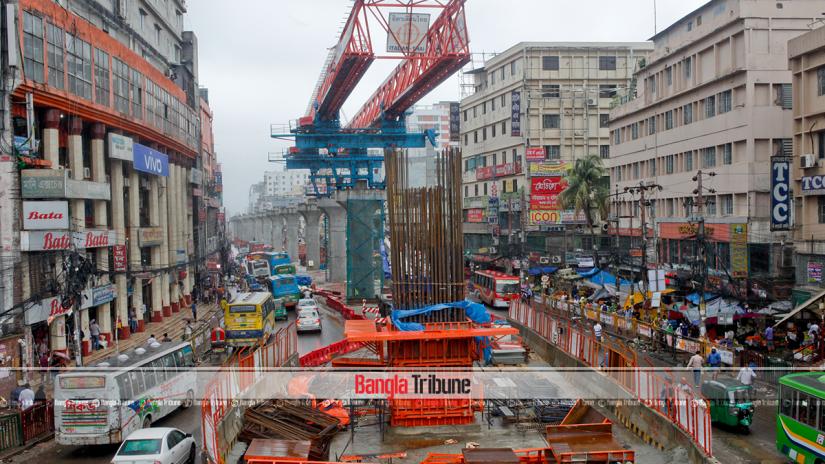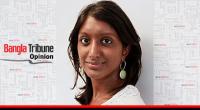 Like many cities of the developing world, Dhaka has seen astonishing growth and rapid development since 1971. It has changed into the capital of a nation from a mere provincial city since the birth of Bangladesh. It is one of the only seven cities in the world which has experienced urban population growth higher than 2.4% between 1975 and 2005 (UN, 2006). It was one of the top ten megacities in the world in 2011. Unfortunately, the development occurred in an unplanned way, especially, since the 1990s. These days the name Dhaka regularly comes up in the lists of most unliveable cities.
Like many cities of the developing world, Dhaka has seen astonishing growth and rapid development since 1971. It has changed into the capital of a nation from a mere provincial city since the birth of Bangladesh. It is one of the only seven cities in the world which has experienced urban population growth higher than 2.4% between 1975 and 2005 (UN, 2006). It was one of the top ten megacities in the world in 2011. Unfortunately, the development occurred in an unplanned way, especially, since the 1990s. These days the name Dhaka regularly comes up in the lists of most unliveable cities.
Public transport in dire straits
Public transport system in Dhaka now consists of only conventional bus services and para-transits (rickshaws, auto-rickshaws, taxis, battery bikes etc.). The lack of an effective public transport system and a general preference for door-to-door service led to an increase of private cars and other modal shifting. Though railway was very popular and still is a relatively safer and cheaper transport system in the context of Bangladesh; because of the absence of proper initiatives and investment in the urban corridors, the railways could not play the expected role in the city’s public transport system.
All the given factors created a situation where cars and motorcycles are becoming increasingly a necessity for the middle class, to get around in Dhaka. As a result, there has occurred a further congestion of the roads and worsening air pollution, noise, and safety problems. The number of registered motorized vehicle stands at nearly 1.26 million in April 2018, up from 303,215 in 2003 (a four-fold increase in 15 years). More than 36% of all registered vehicles are in Dhaka (nearly 3.42 million in Bangladesh), according to official figures. The alarming trend is that the number of buses and minibuses has remained almost same in this period; private vehicles, particularly cars and motorcycles, have almost tripled. Public transport such as buses and minibuses has grown at a very insignificant rate even though the demand for public transport services is increasing. Motorcycles and cars constitute around 54% and 26% of total motorized vehicles respectively.
The alarming trend is that the number of buses and minibuses has remained almost same in this period; private vehicles, particularly cars and motorcycles, have almost tripled. Public transport such as buses and minibuses has grown at a very insignificant rate even though the demand for public transport services is increasing. Motorcycles and cars constitute around 54% and 26% of total motorized vehicles respectively.
The future ahead
To improve the current situation and reorganize the existing traffic system methodically, the government has prepared the Strategic Transport Plan (STP) for Dhaka (2005); it has been recently revised (it has now become Revised Strategic Transport Plan, RSTP from 2015). It recommended a package of comprehensive programs for the development of transport infrastructure over a 20-year period. This strategy includes various types of development agendas, such as three Bus Rapid Transit (BRT) and Mass Rapid Transit (MRT) (Metrorail) routes, more than 50 highway projects, expressways, flyovers etc.
But heavy infrastructural development and rapid motorization, which promote cars, comes with the depletion of the transportation equity in a city. For example, from an environmental and equity perspective, major concerns exist regarding the unwanted increase of motorized two-wheelers. Some have even characterized the motorcycle as the “most challenging” transport problem that Asia will face in the next decade. The rise of private transport and the current prevalence of NMTs (Non Motorized Traffic, mostly rickshaws) is not a sustainable solution although they may help to increase mobility in short term. So, like other properly planned and developed cities around the world, NMT movement will be restricted in near future in Dhaka too. Hence, for transportation equity and accessibility, not only public transit is necessary but also Mass Rapid Transit (MRT) (e.g. subway, BRT, LRT etc.) are required and we hope that the ongoing projects of MRT and BRT will help to ease the present horrendous situation.
The rise of private transport and the current prevalence of NMTs (Non Motorized Traffic, mostly rickshaws) is not a sustainable solution although they may help to increase mobility in short term. So, like other properly planned and developed cities around the world, NMT movement will be restricted in near future in Dhaka too. Hence, for transportation equity and accessibility, not only public transit is necessary but also Mass Rapid Transit (MRT) (e.g. subway, BRT, LRT etc.) are required and we hope that the ongoing projects of MRT and BRT will help to ease the present horrendous situation.
Dhaka is probably one of the very few megacities in the world without any properly planned design or guideline for the expansion mass transit system. Few other examples can be named like Lagos, Karachi or Kinshasa, capital of DR Congo, but none of them have a population density of about 43,000 or probably 50,000 people per square kilometer. According to some projections, approximately 24 million and 35 million people will reside in Dhaka respectively in 2030 and 2050. So, if Dhaka needs to survive the juggernaut called ‘development’ and ‘urbanization’, it must make a proper plan not only to provide guidelines on paper but also for its actual implementation on the ground; where there is little or no scope for a mistake.
The writer is a consultant for Urban Public Transport Projects at the Dhaka Transport Coordination Authority (DTCA).
 Opinion
Opinion
30751 hour(s) 41 minute(s) ago ;
Morning 02:35 ; Saturday ; Apr 20, 2024
The missing public transport system of Dhaka
Send
Dhrubo Alam
Published : 17:37, May 20, 2019 | Updated : 20:07, May 20, 2019
Published : 17:37, May 20, 2019 | Updated : 20:07, May 20, 2019
0 ...0 ...
/srj/
Topics: Dhrubo Alam
***The opinions, beliefs and viewpoints expressed in this article are those of the author and do not reflect the opinions and views of Bangla Tribune.
- KOICA donates medical supplies to BSMMU
- 5 more flights to take back British nationals to London
- Covid19: Rajarbagh, Mohammadpur worst affected
- Momen joins UN solidarity song over COVID-19 combat
- Covid-19: OIC to hold special meeting
- WFP begins food distribution in Cox’s Bazar
- WFP begins food distribution in Cox’s Bazar
- 290 return home to Australia
- Third charter flight for US citizens to return home
- Dhaka proposes to postpone D8 Summit
Unauthorized use of news, image, information, etc published by Bangla Tribune is punishable by copyright law. Appropriate legal steps will be taken by the management against any person or body that infringes those laws.
Bangla Tribune is one of the most revered online newspapers in Bangladesh, due to its reputation of neutral coverage and incisive analysis.
F R Tower, 8/C Panthapath, Shukrabad, Dhaka-1207 | Phone: 58151324; 58151326, Fax: 58151329 | Mob: 01730794527, 01730794528


